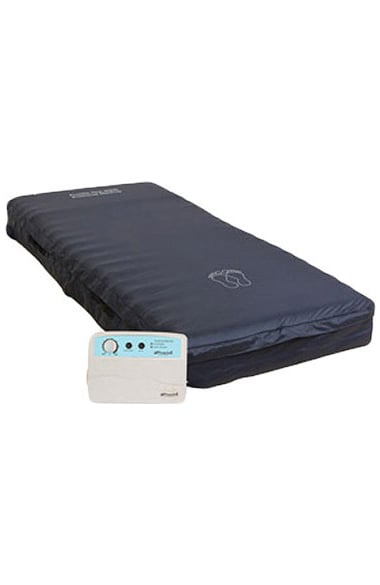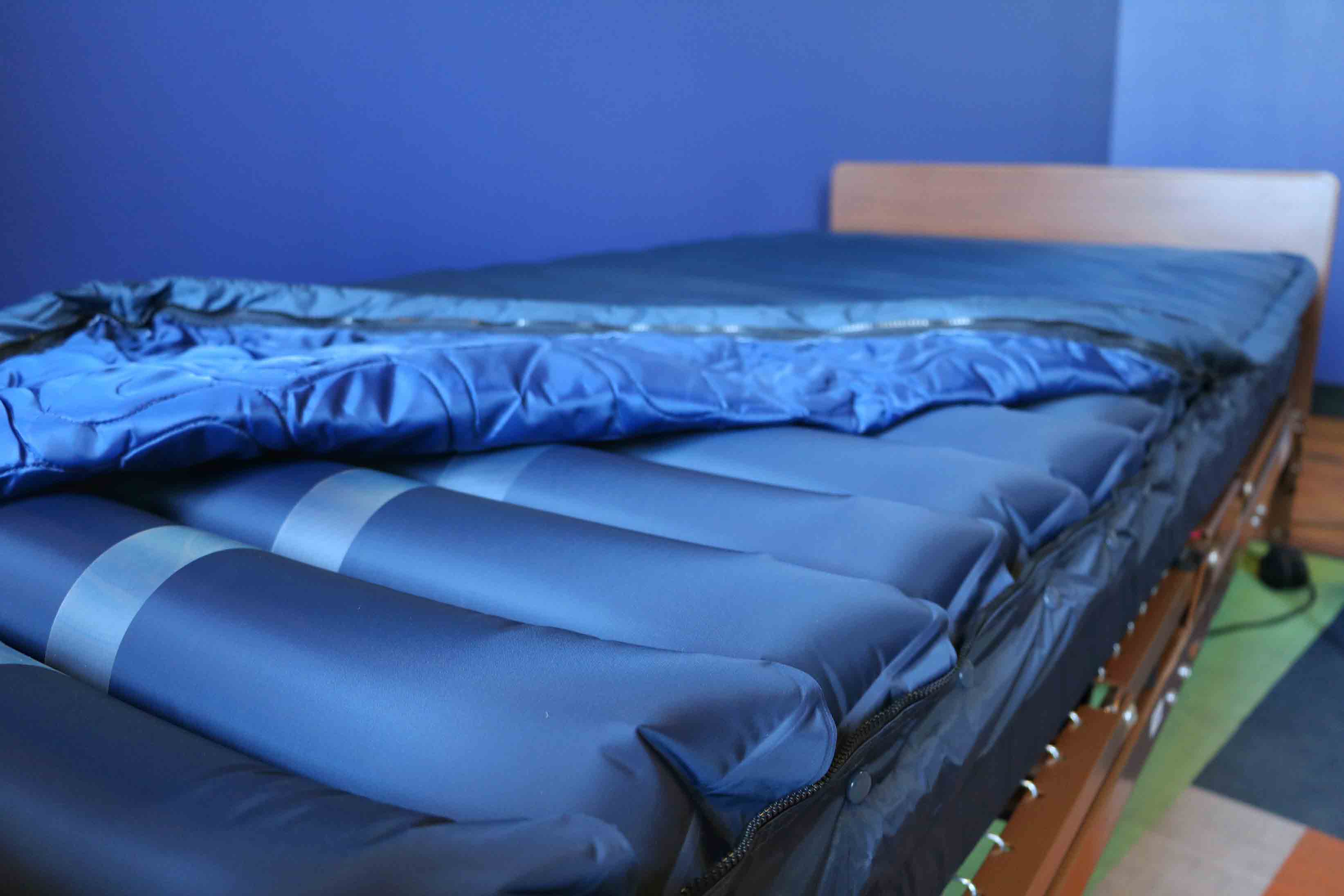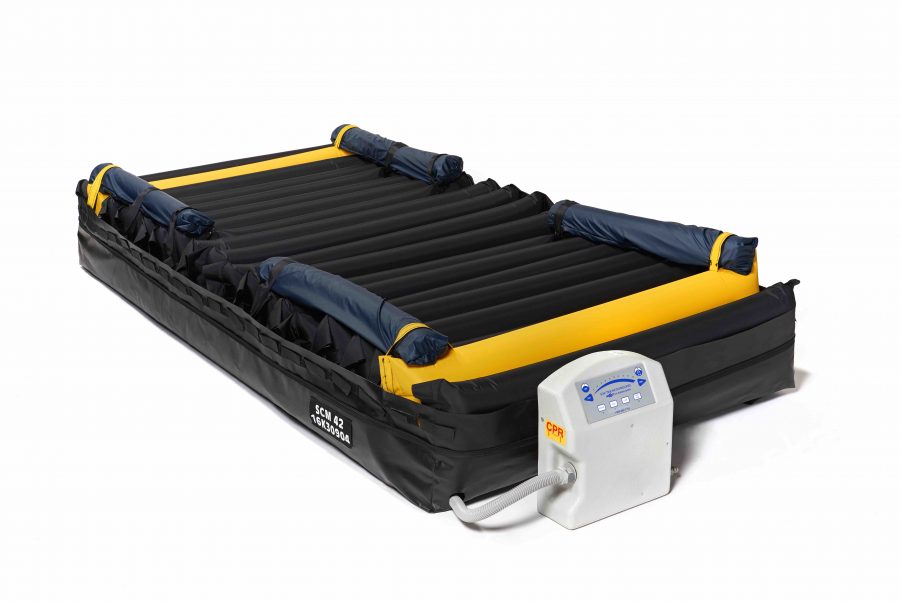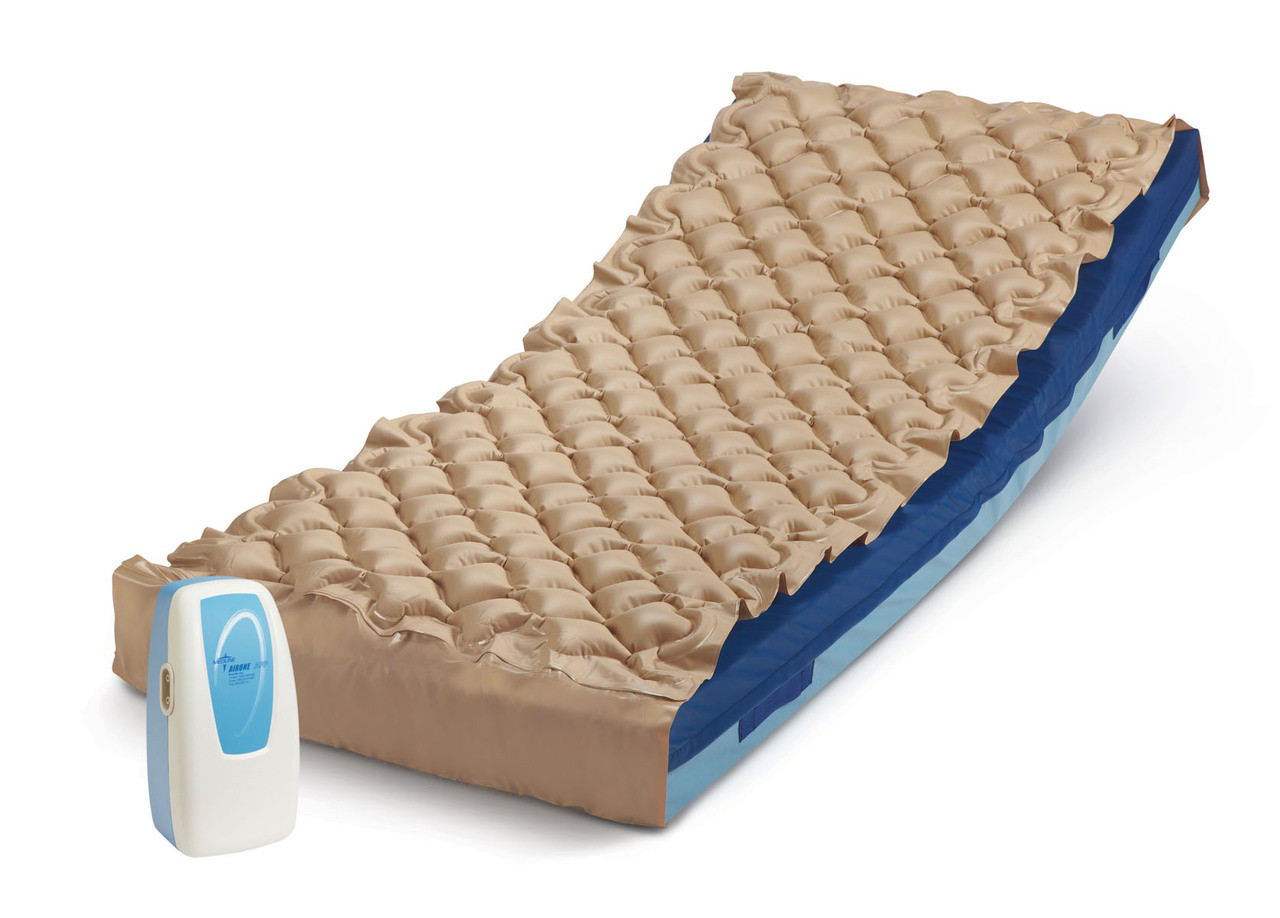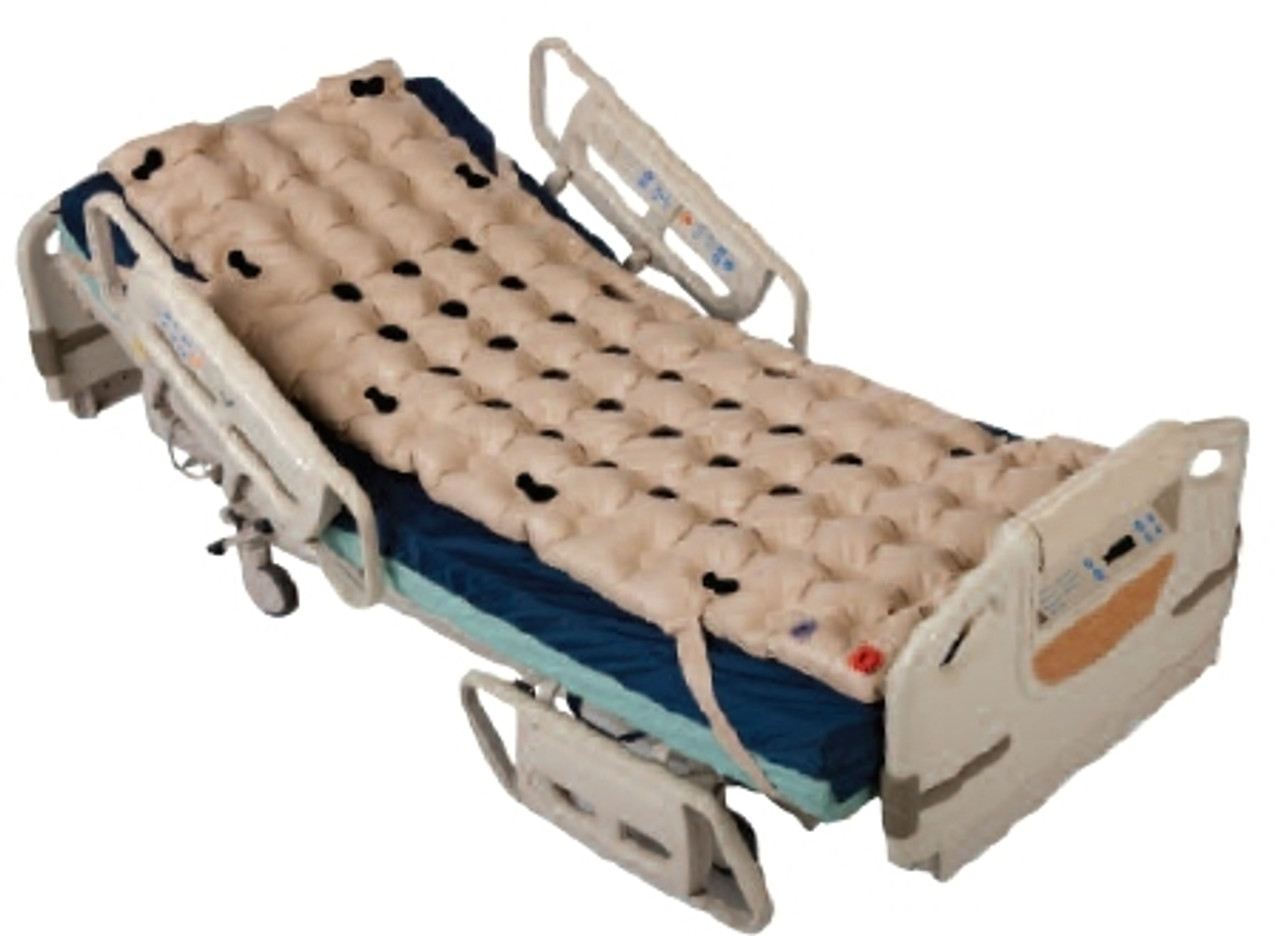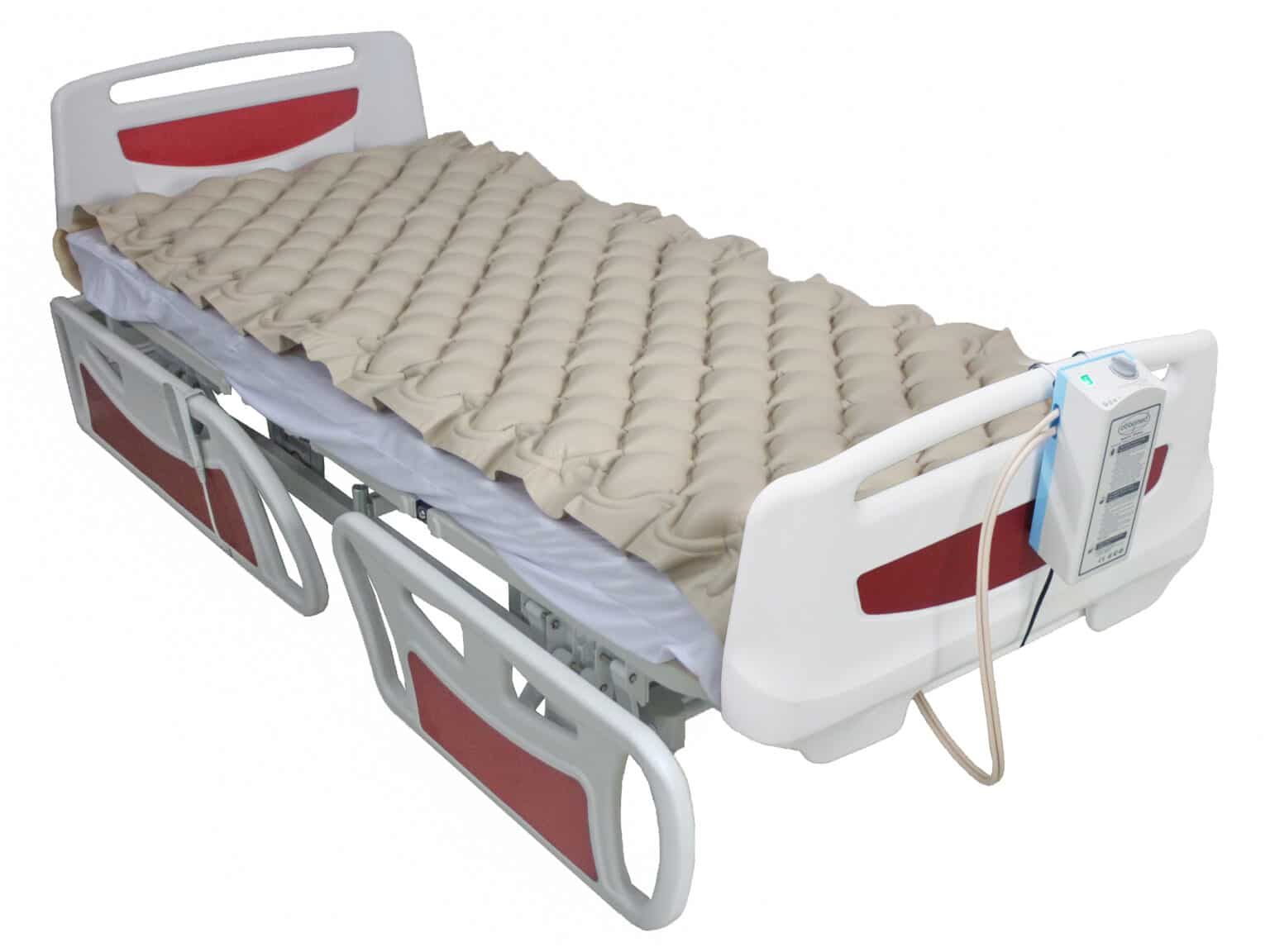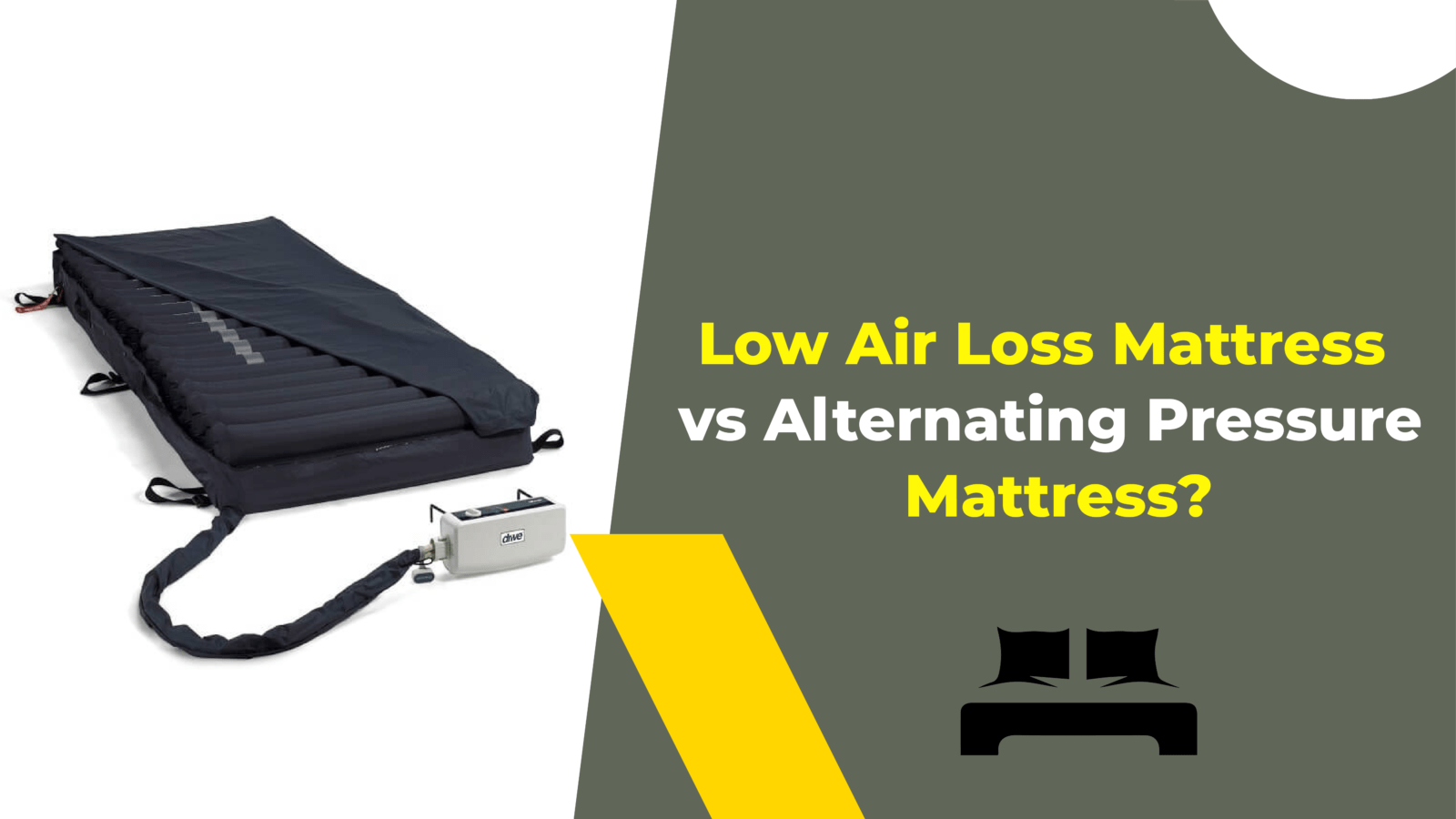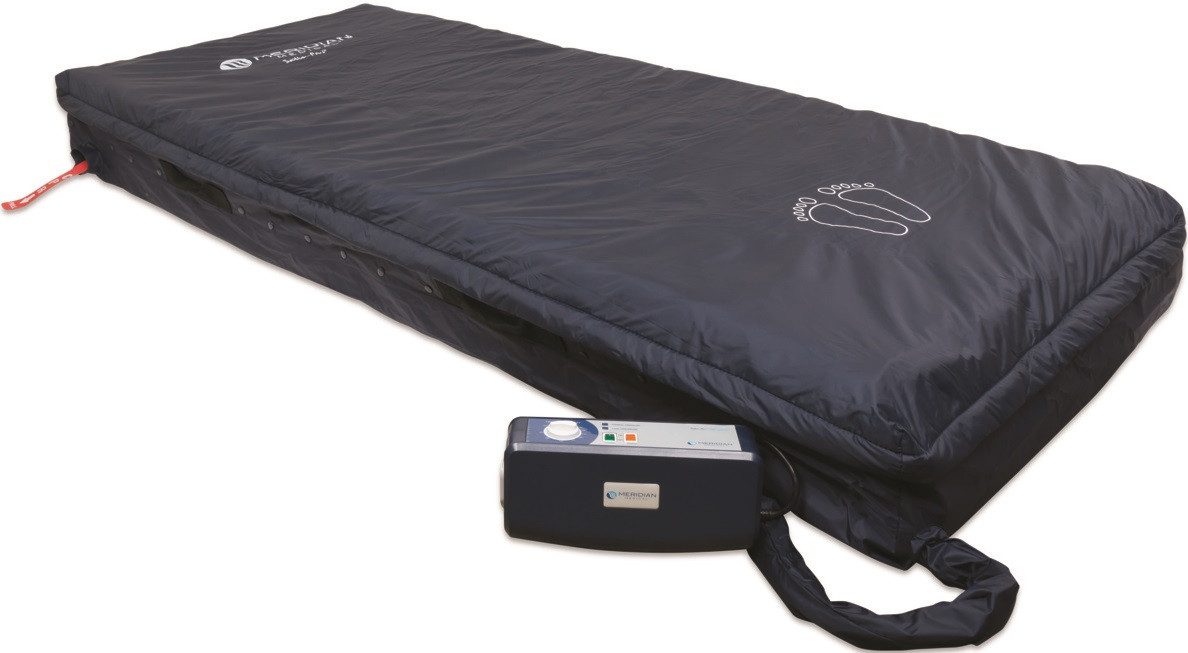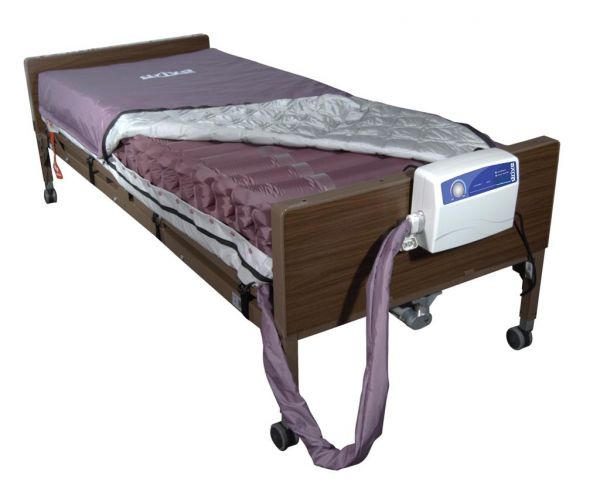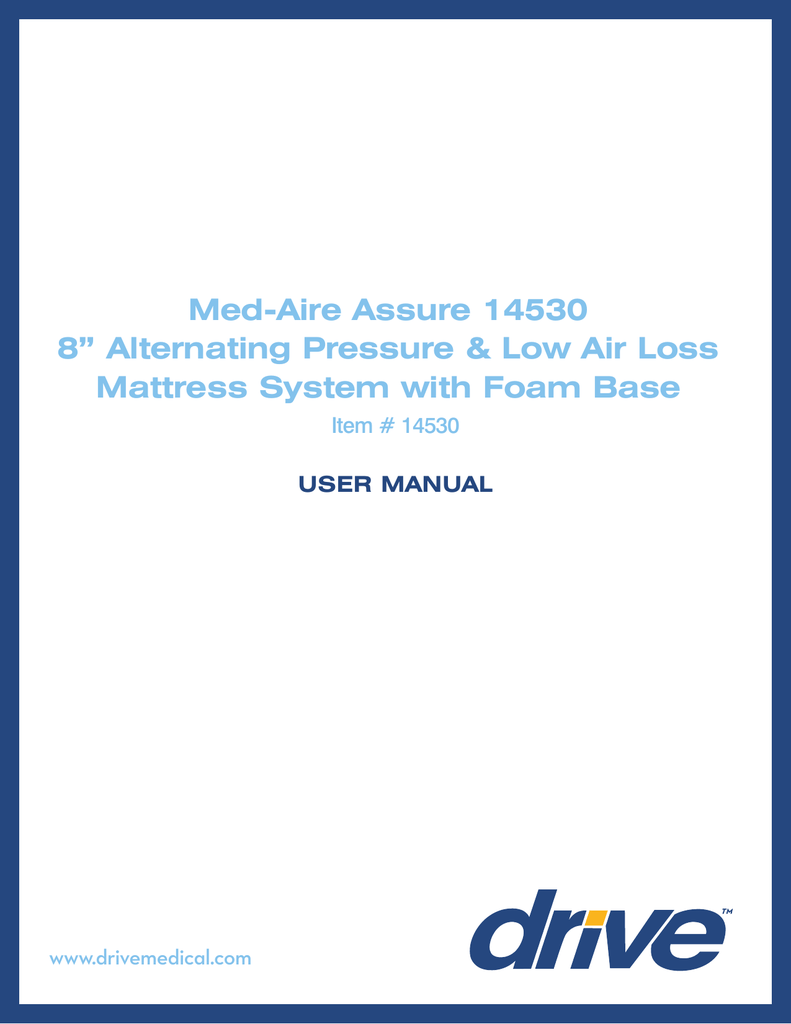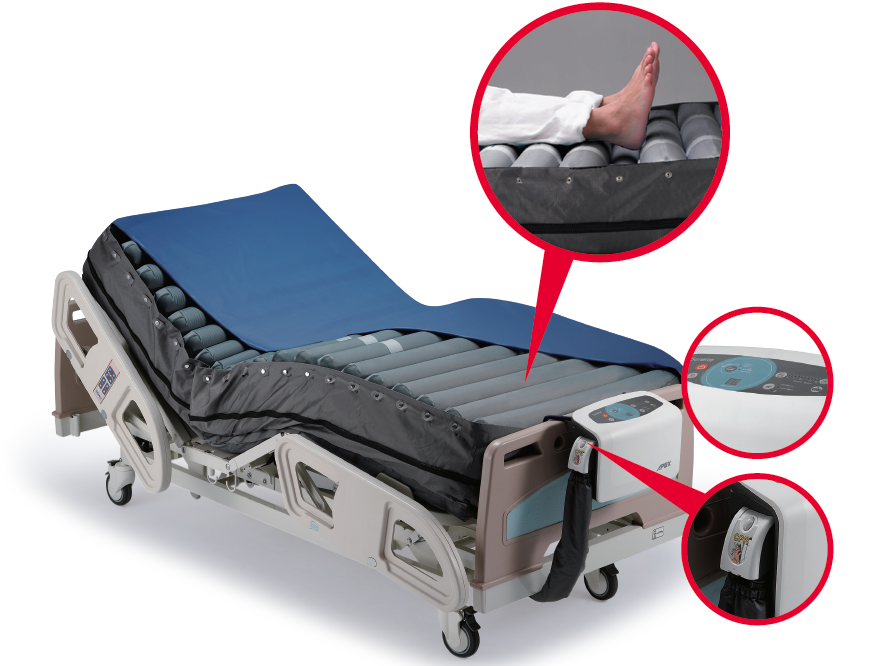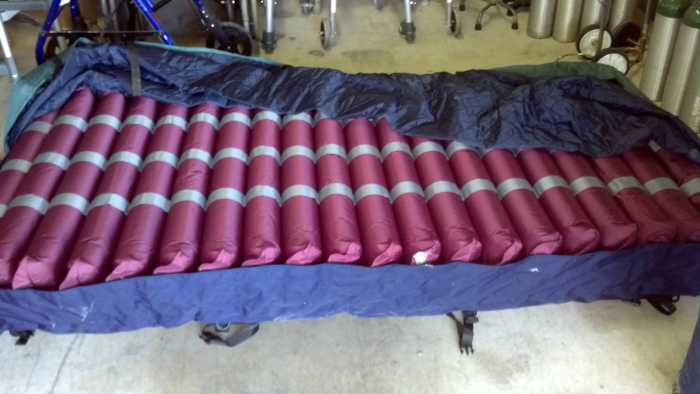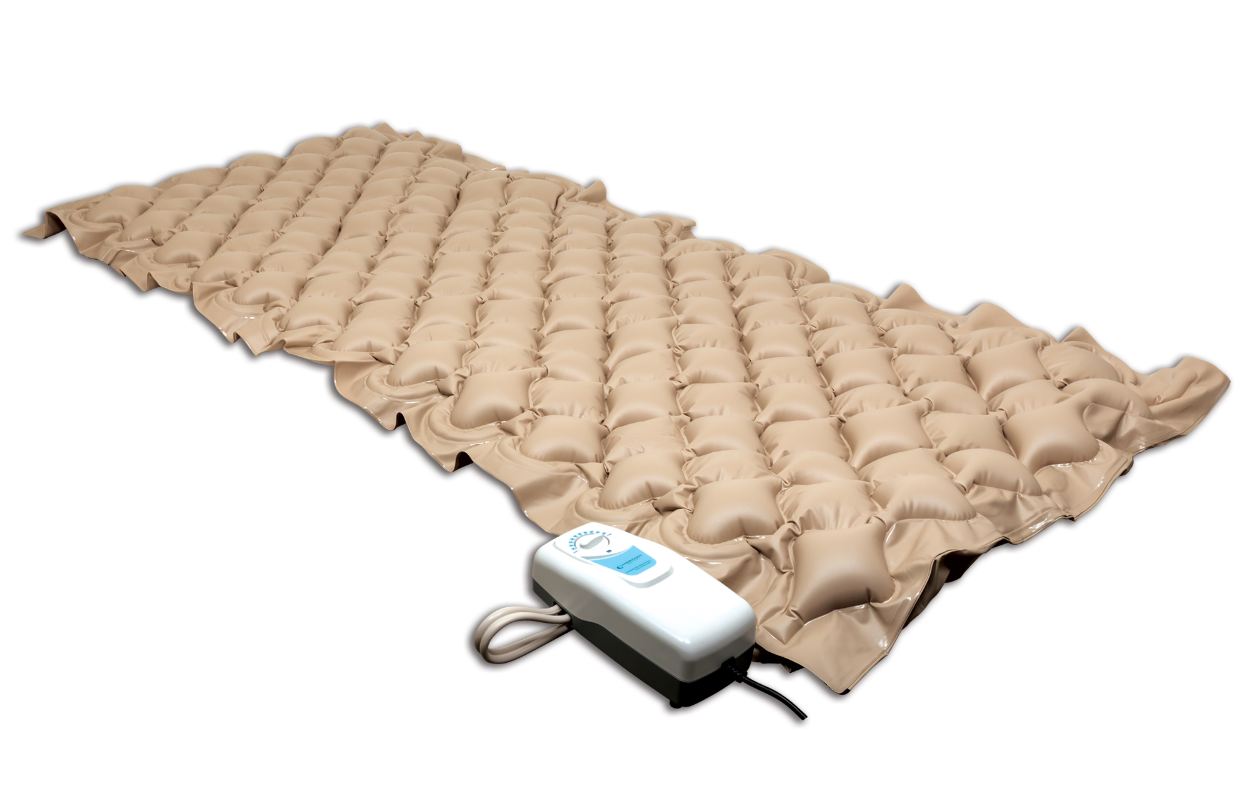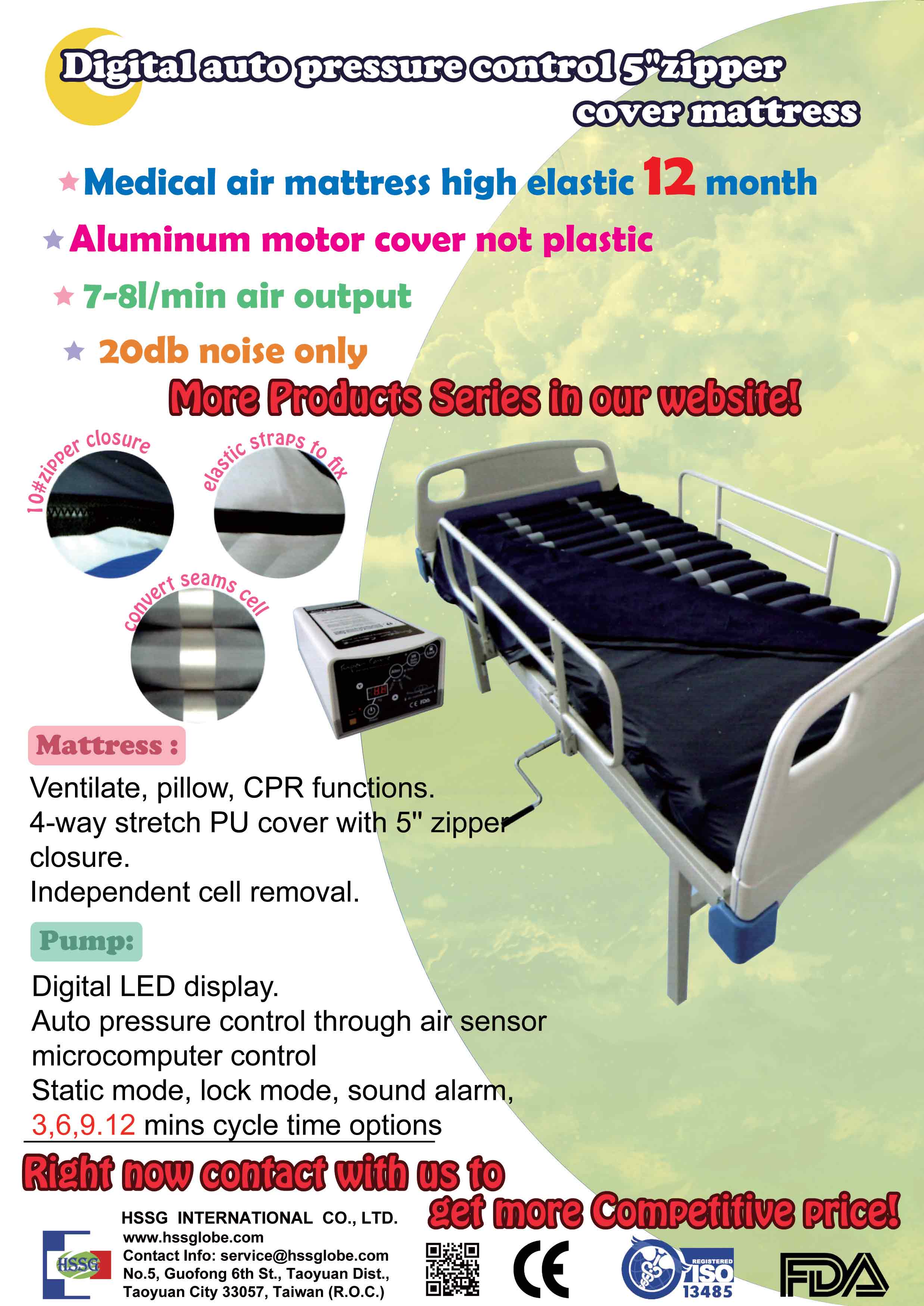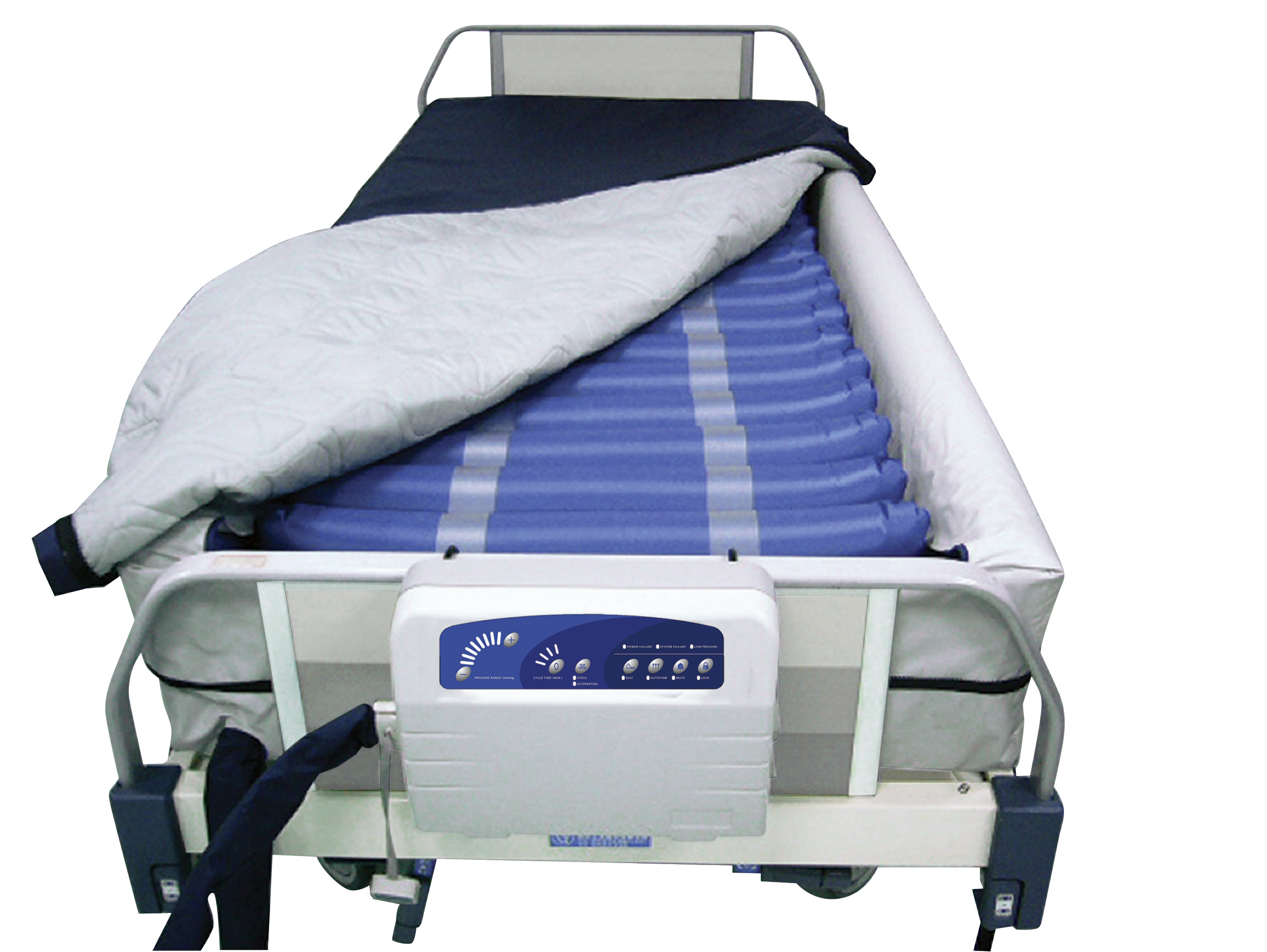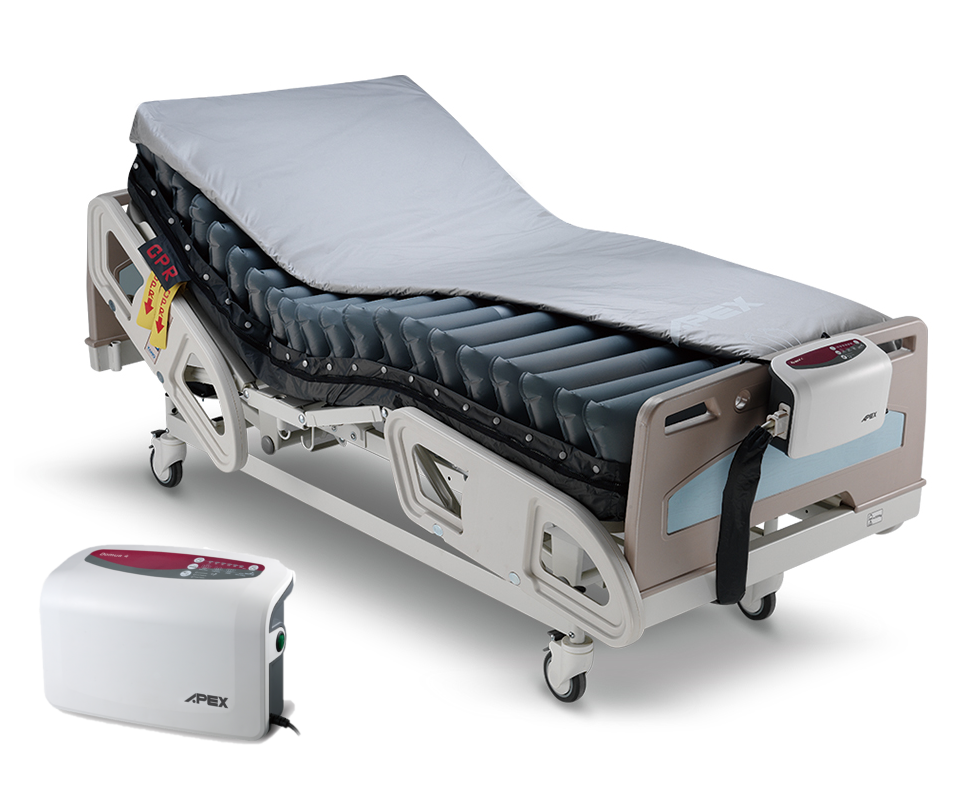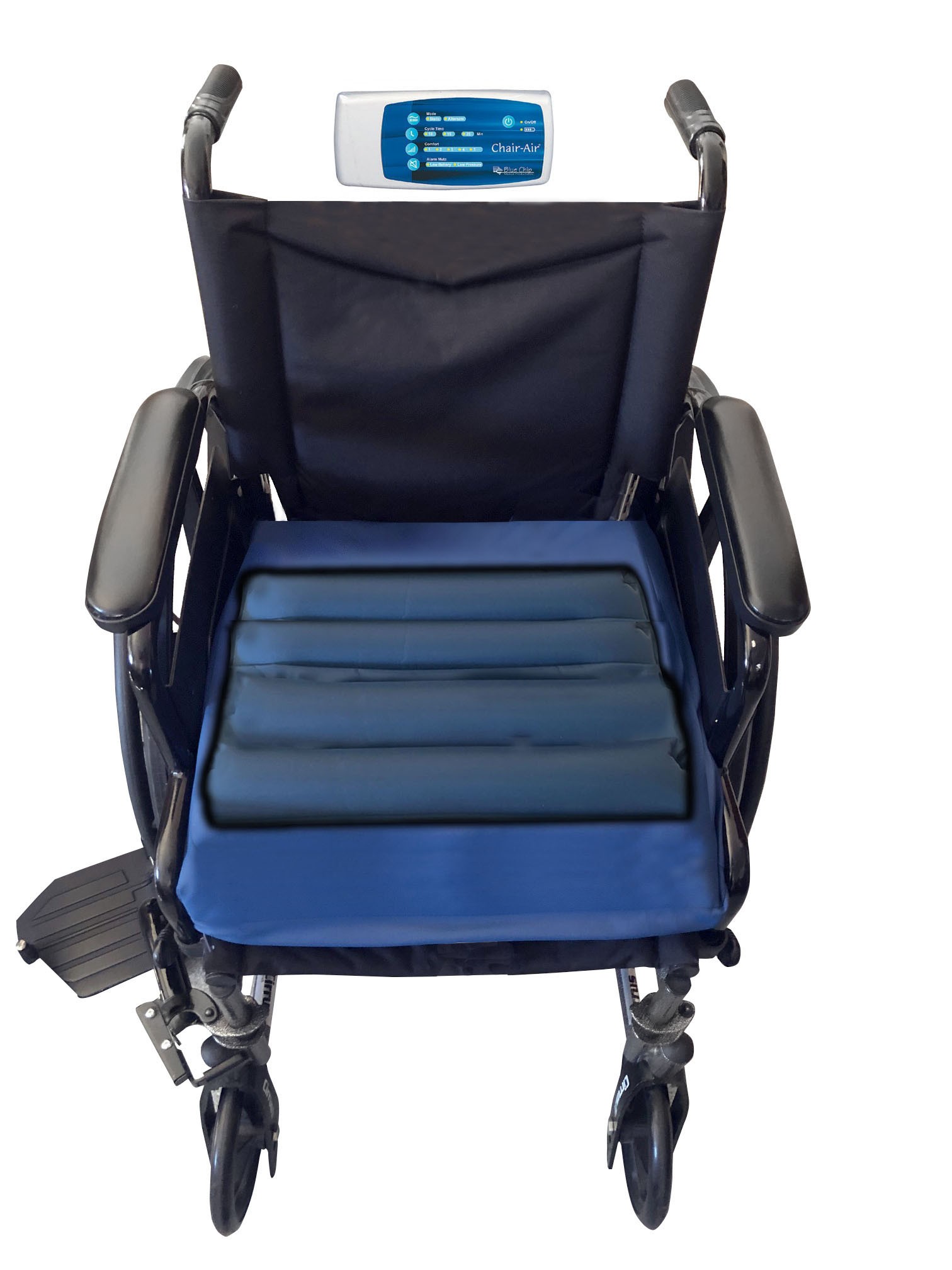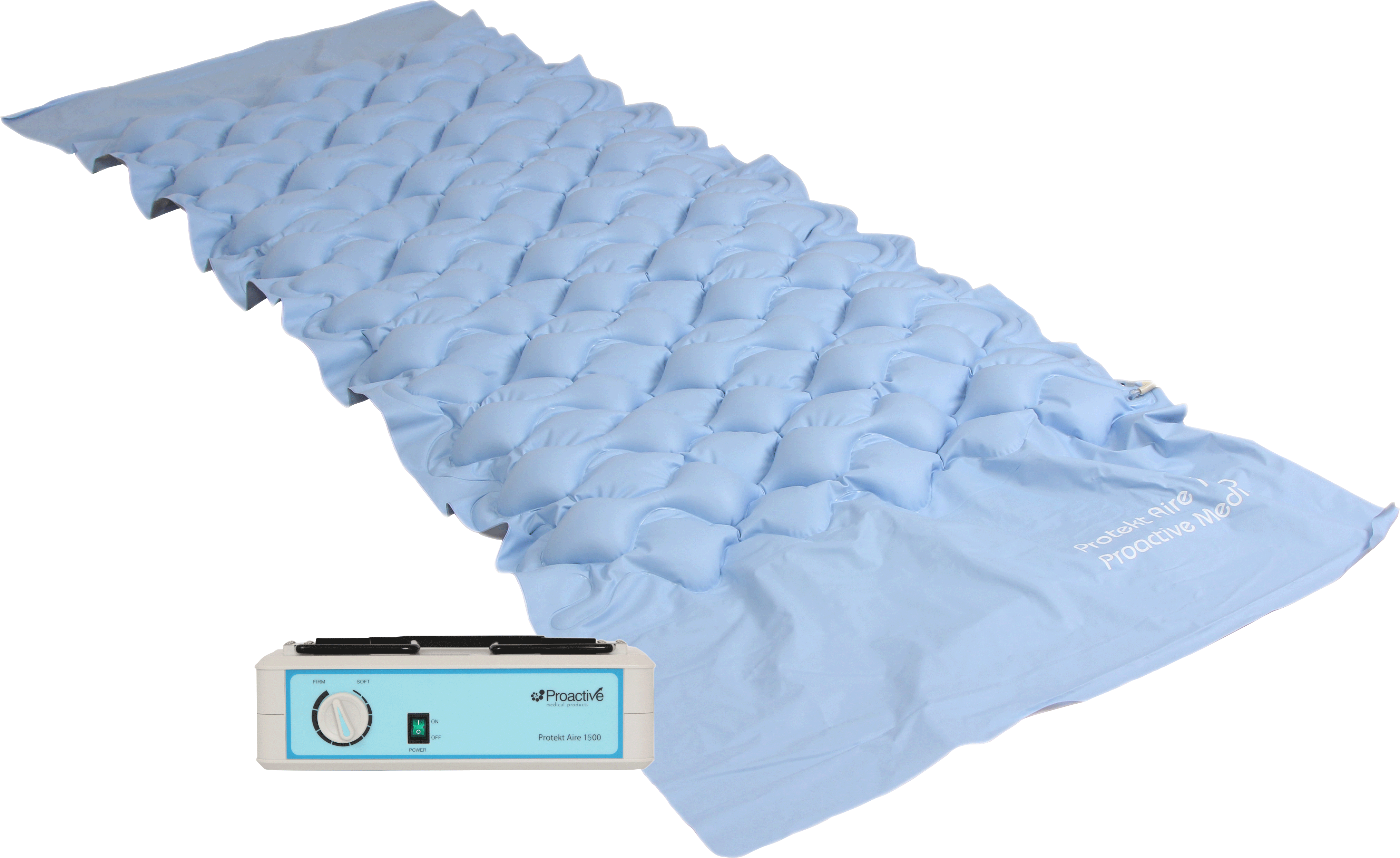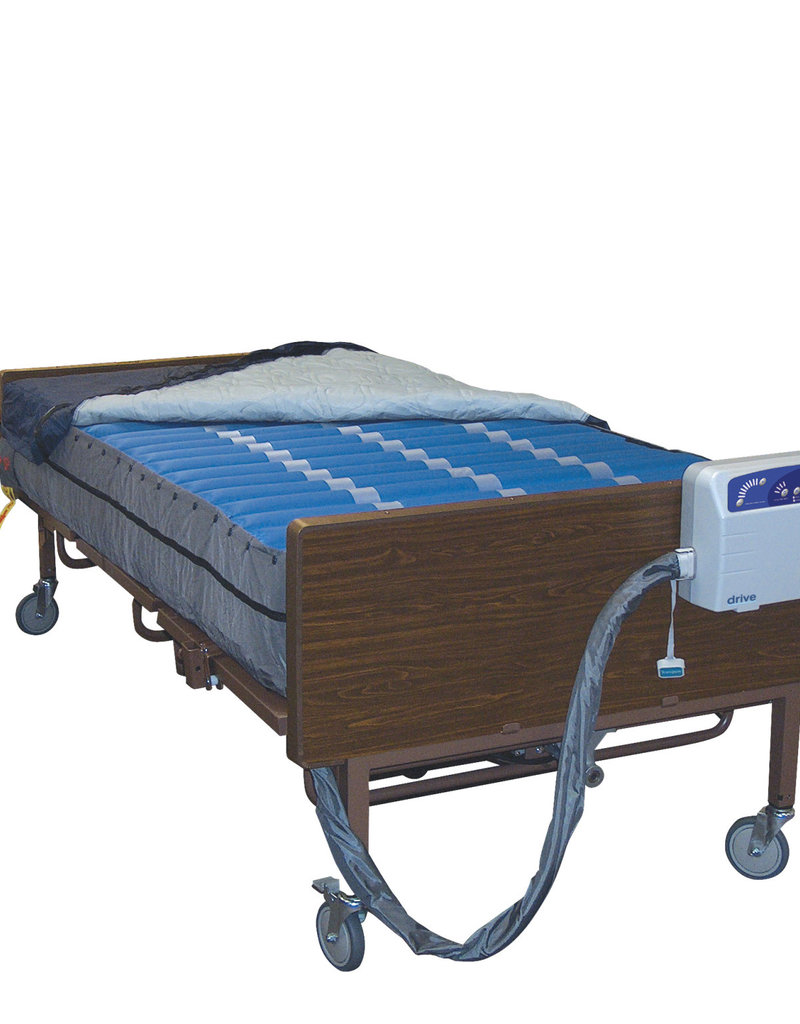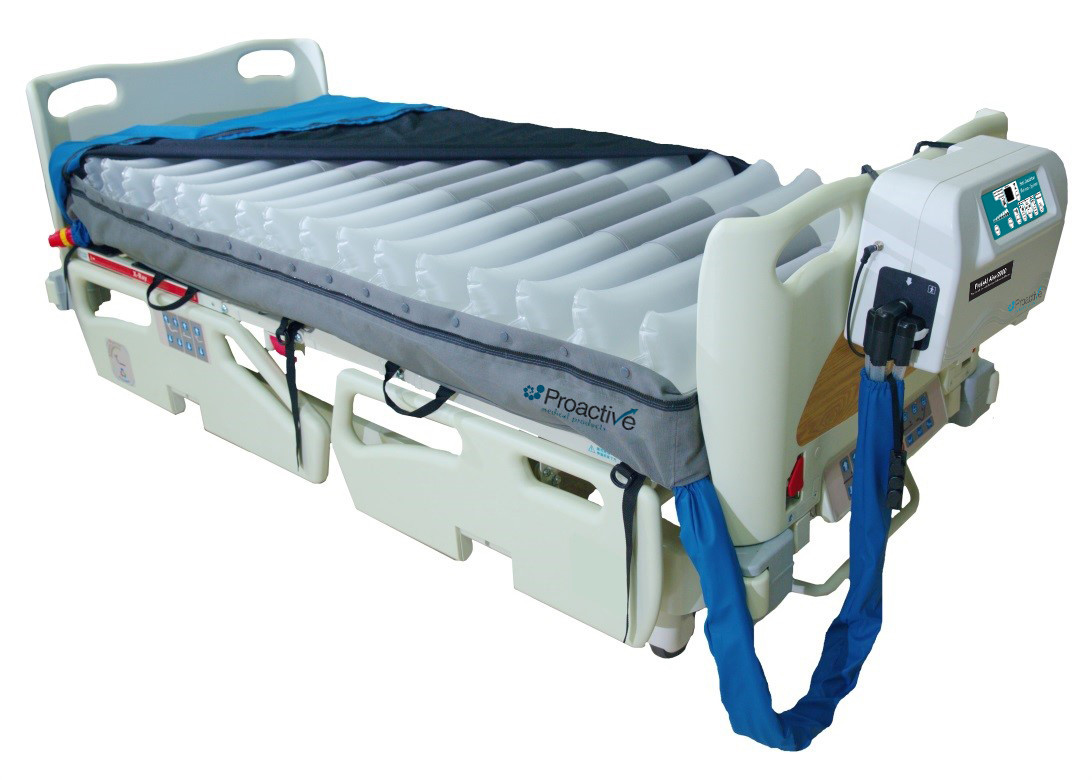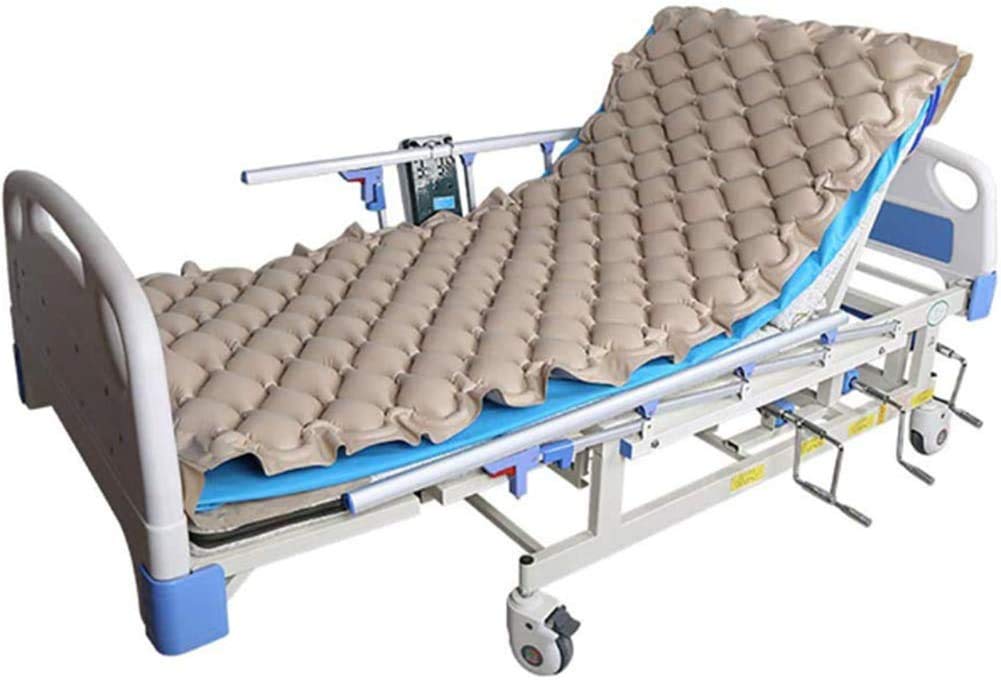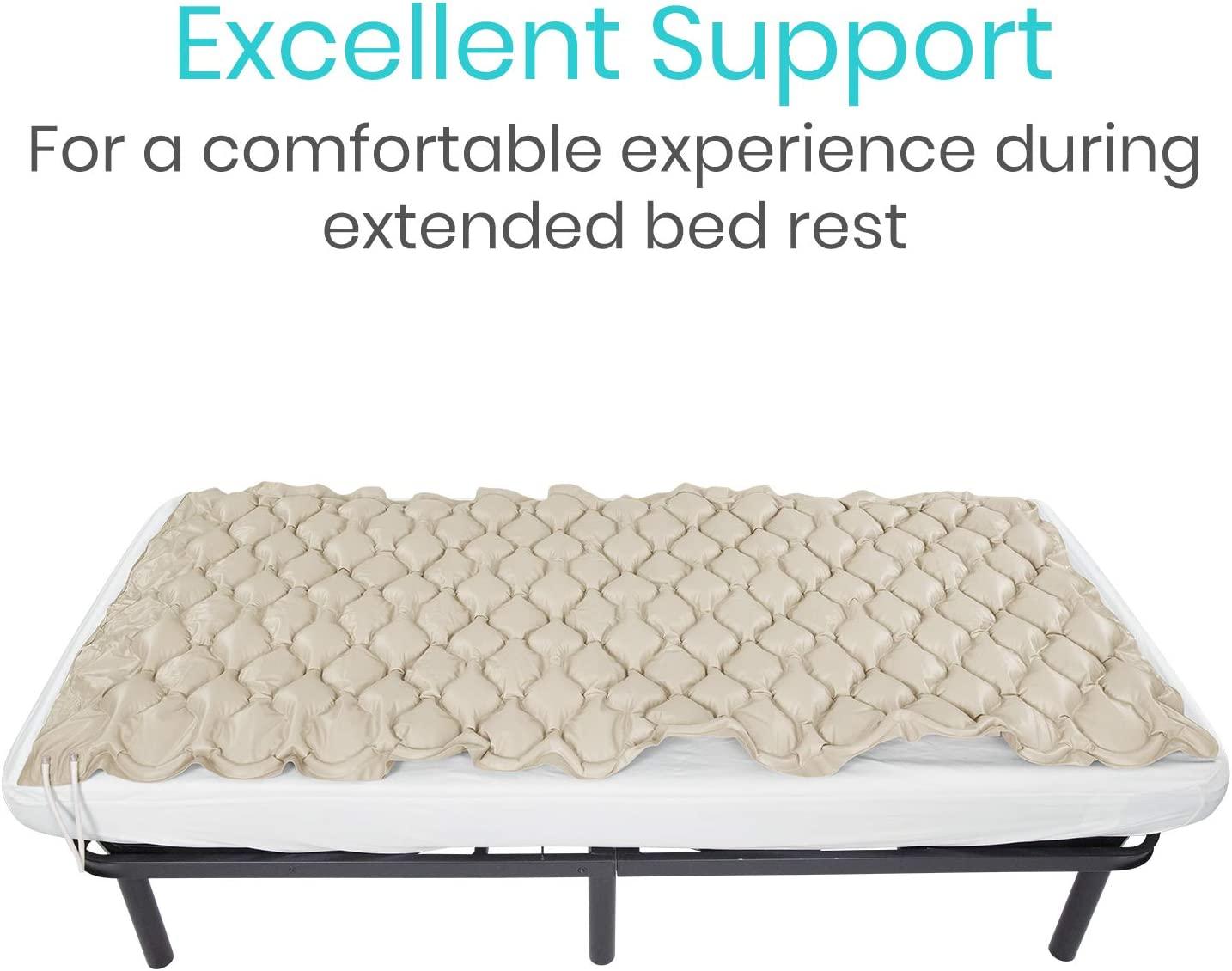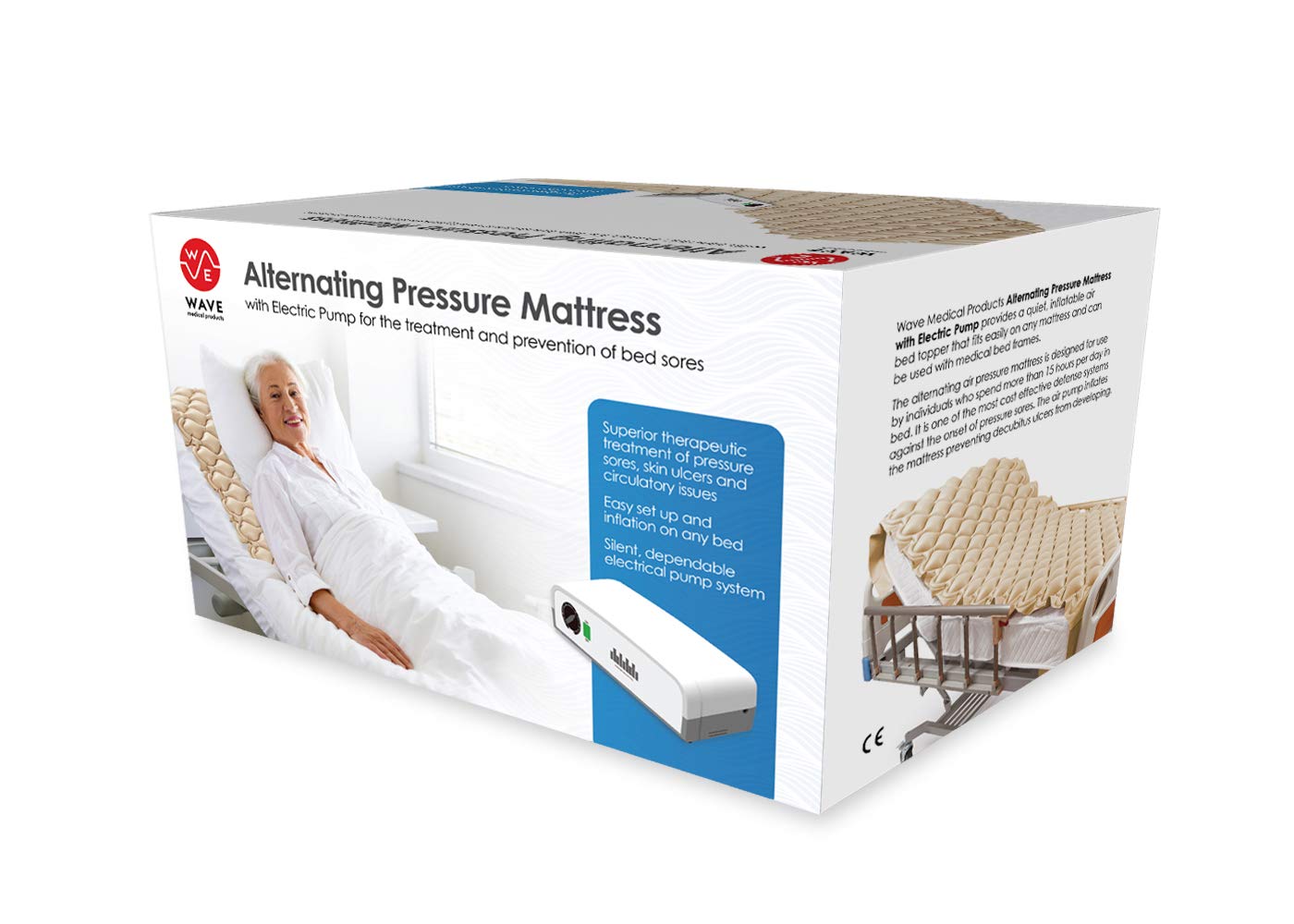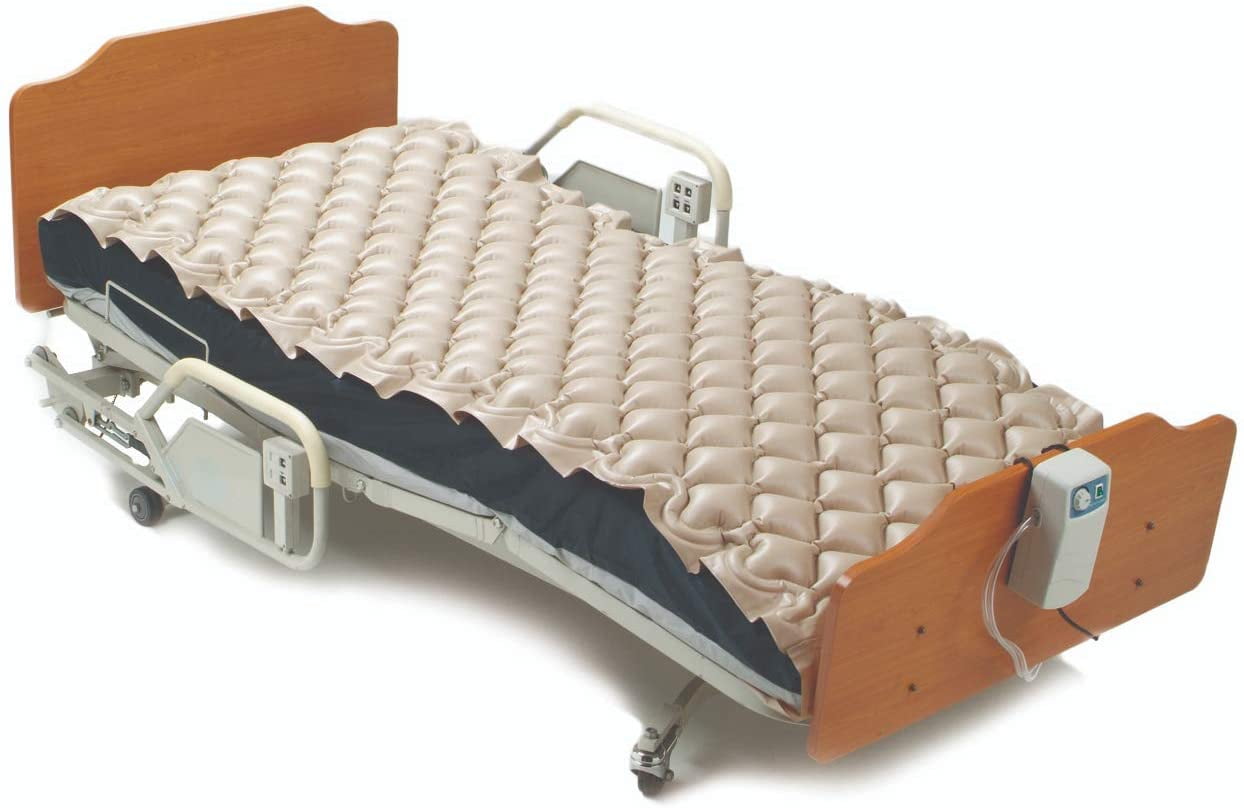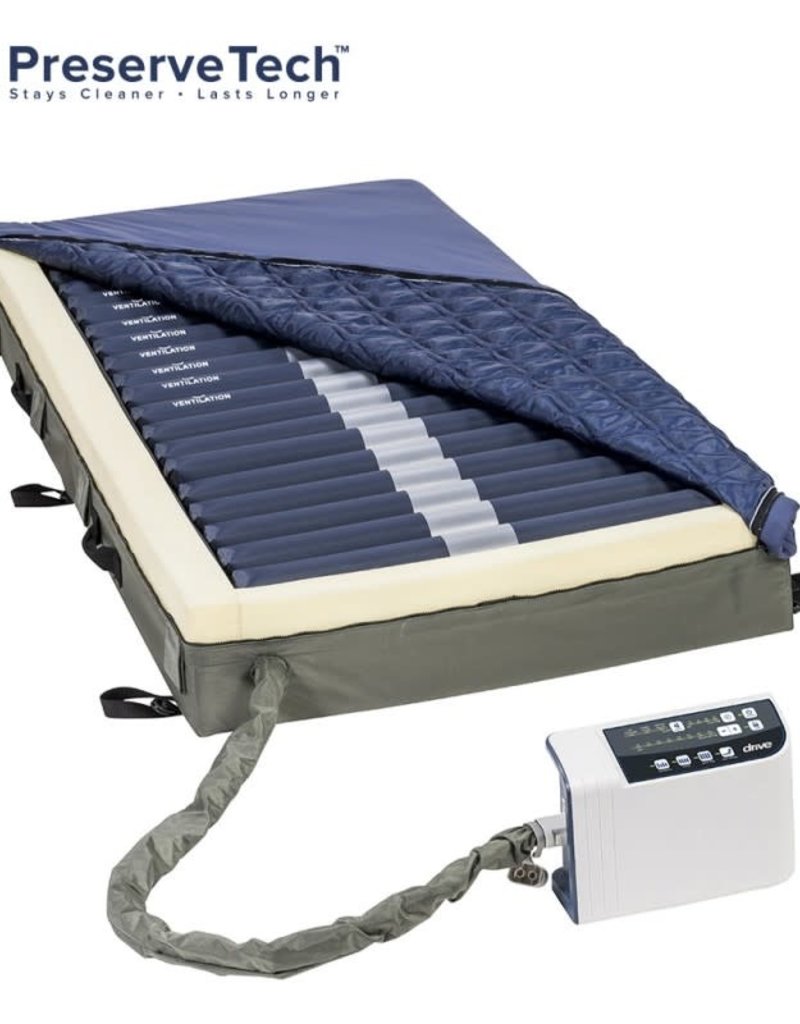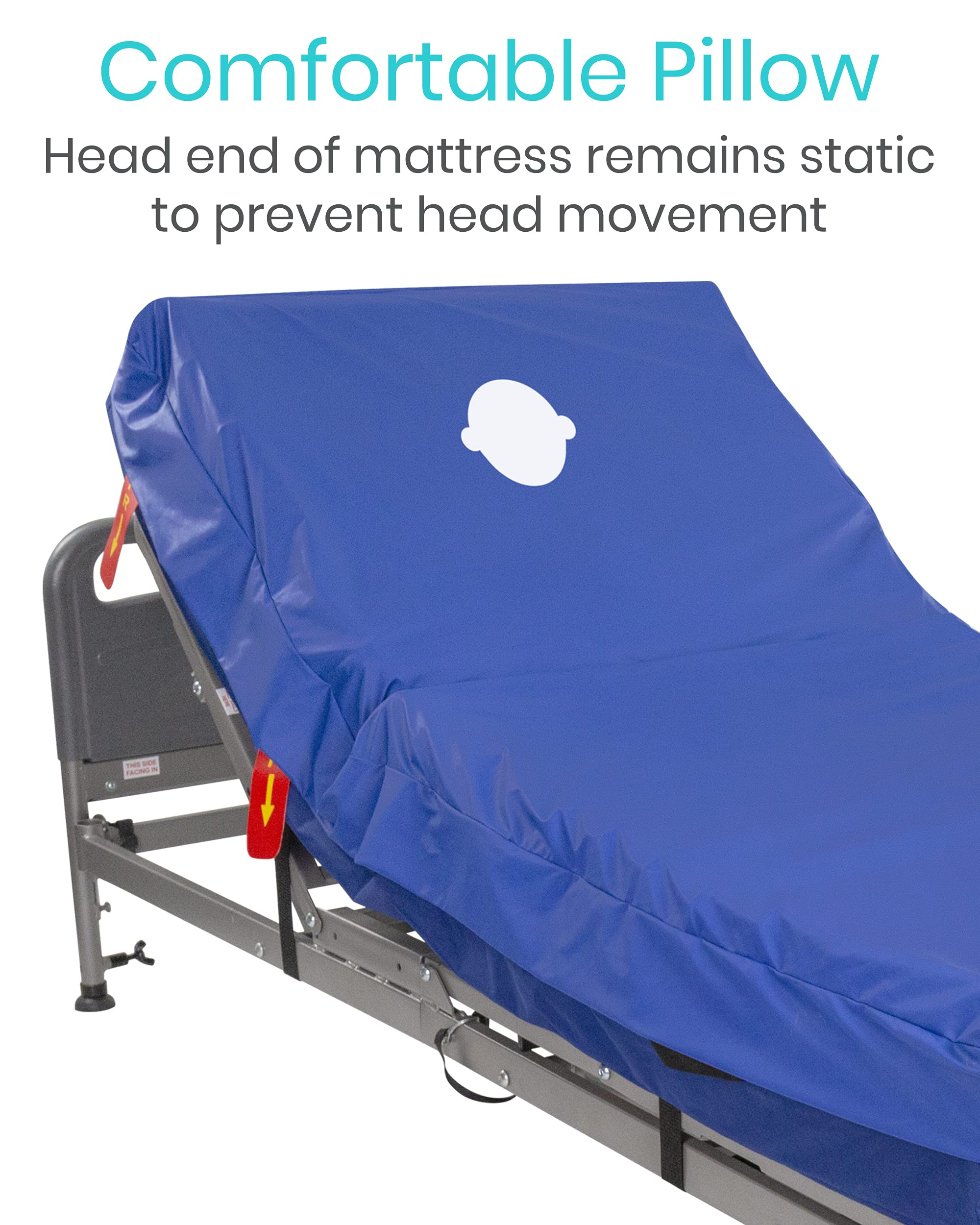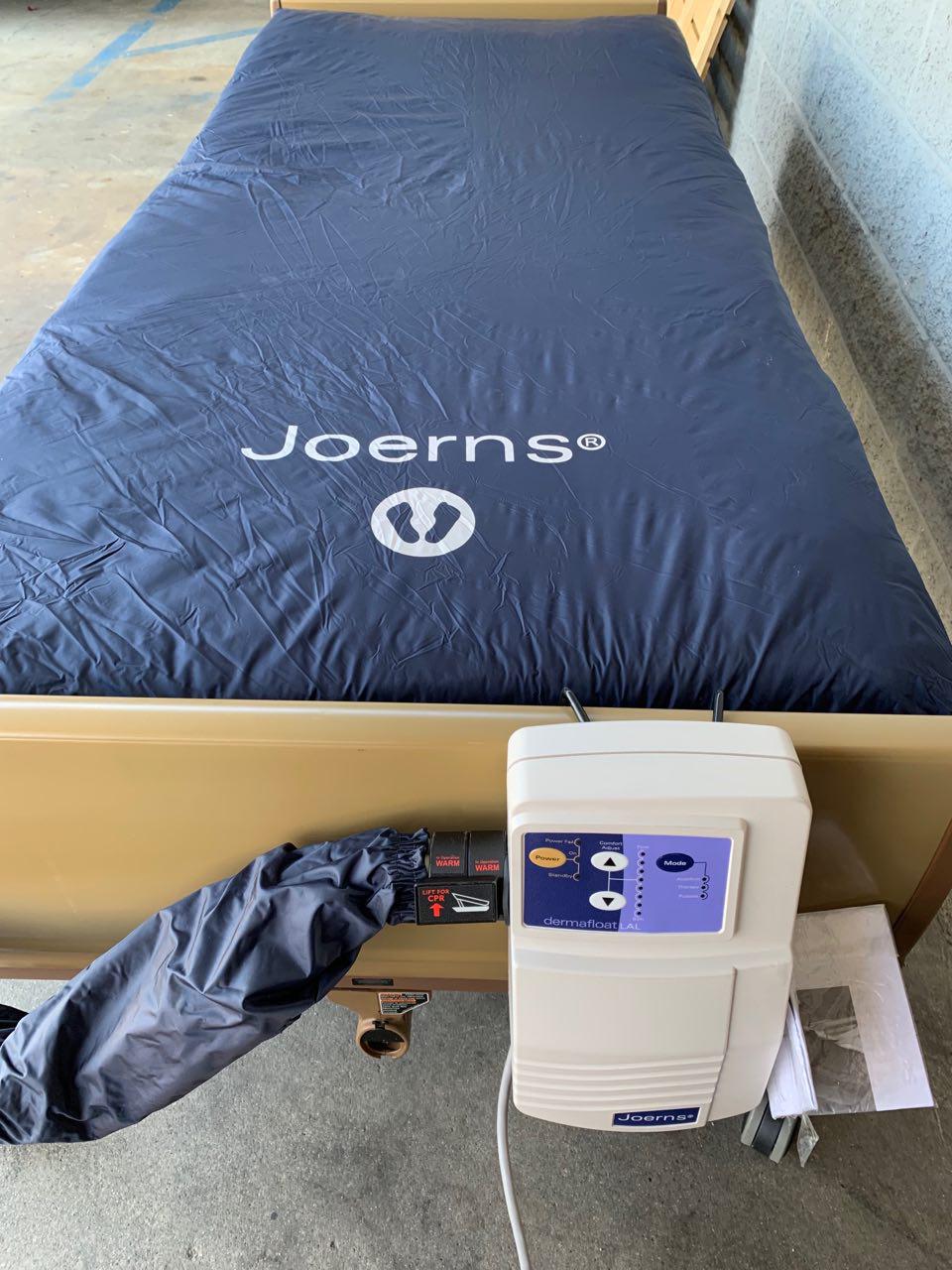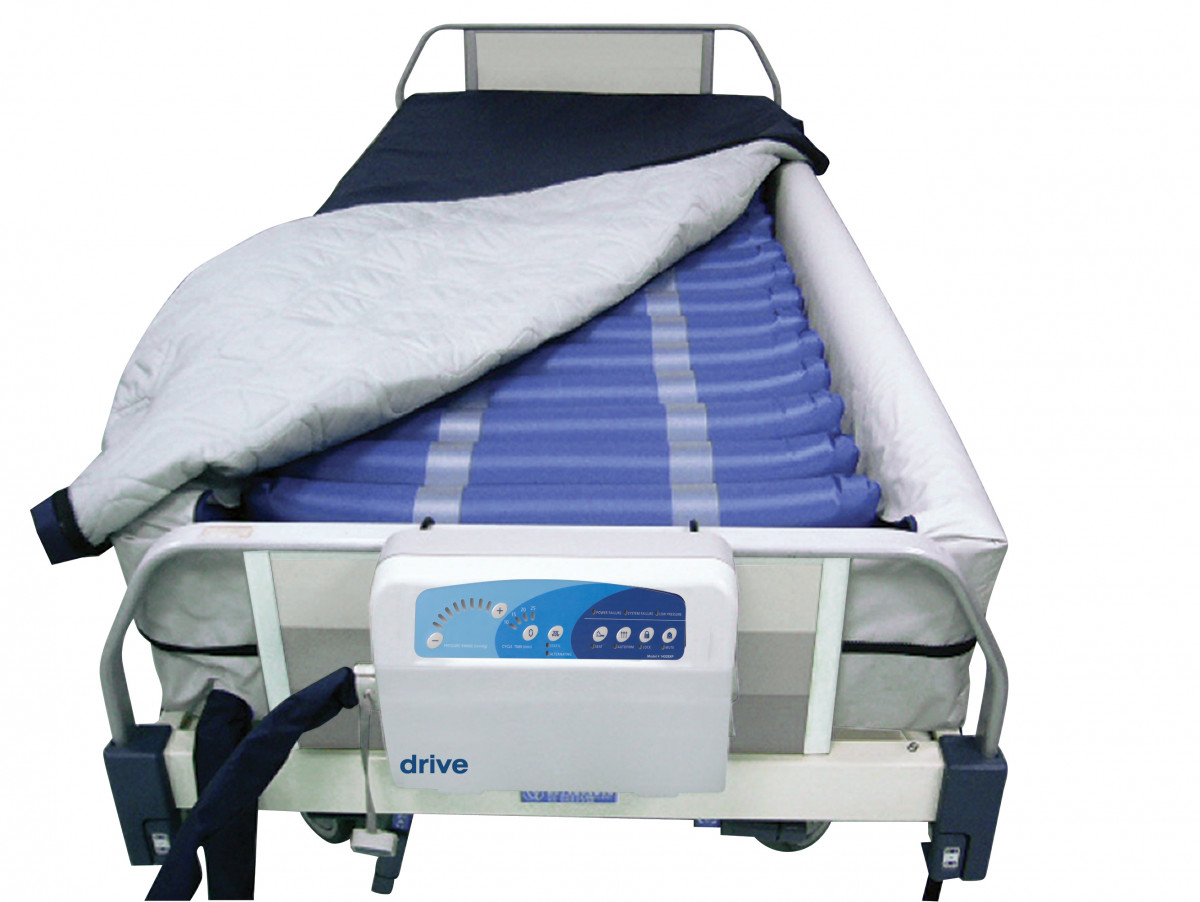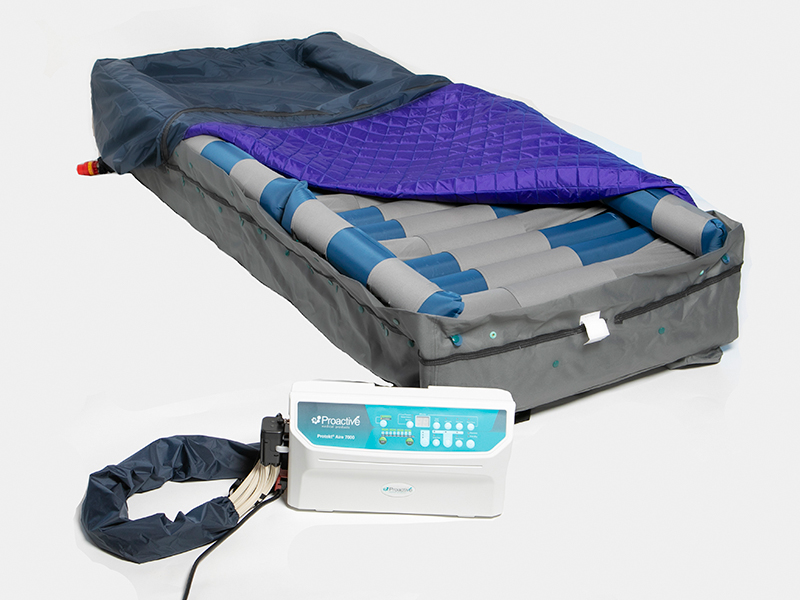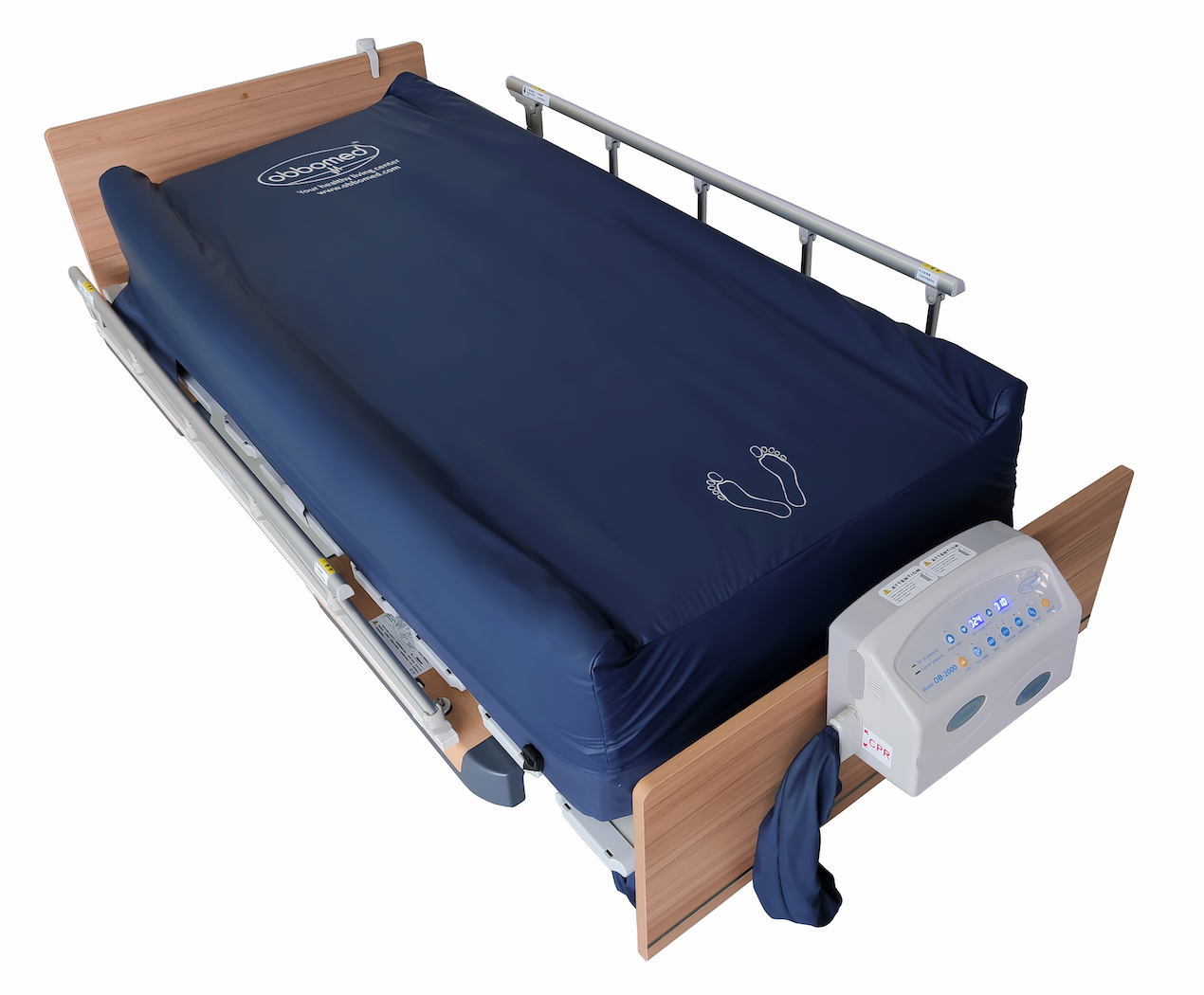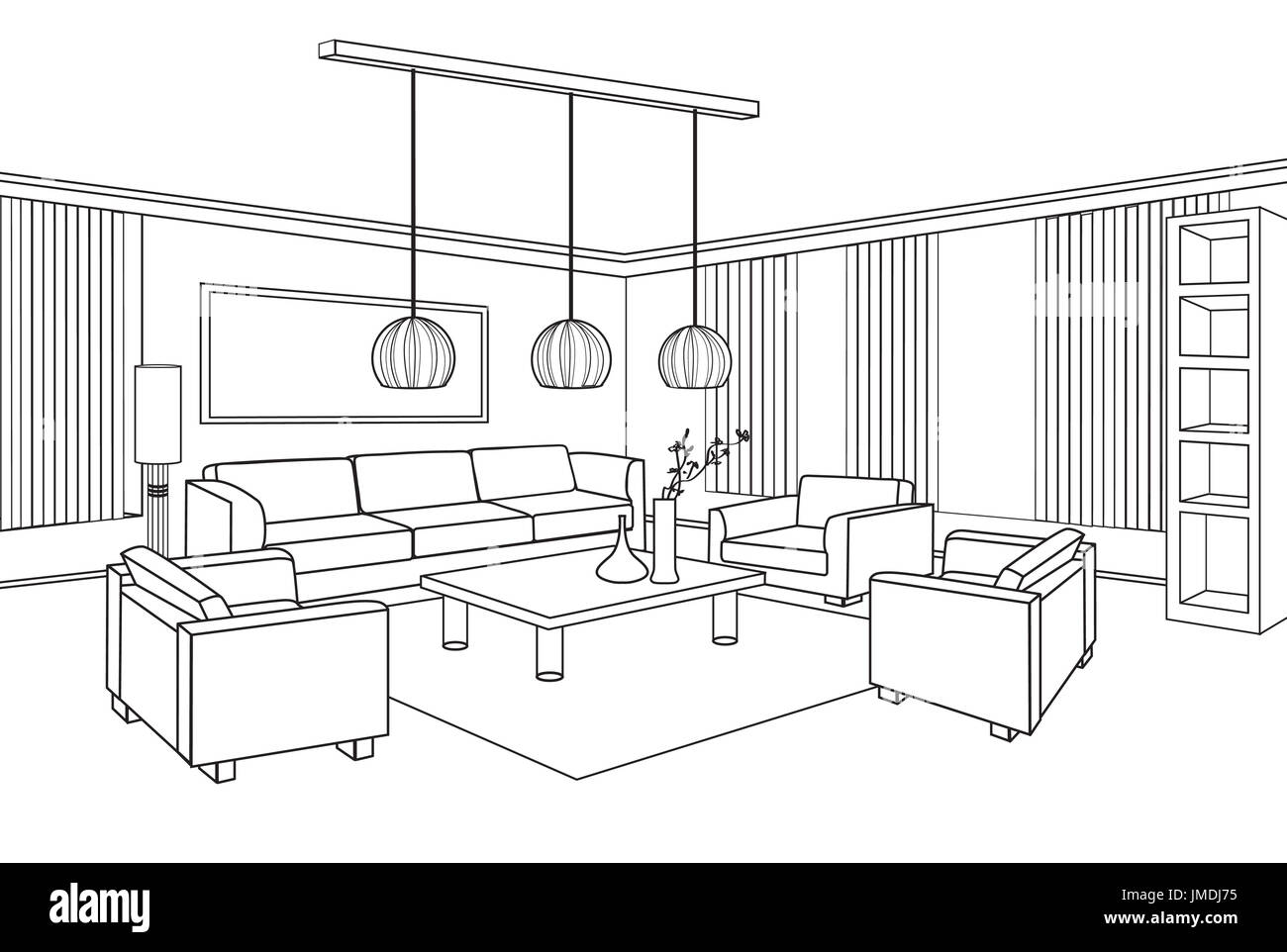A low air loss mattress is a type of medical bed that is designed to provide a constant flow of air under the patient's body. The mattress is made up of multiple air cells that are filled and deflated through a pump system, allowing for the redistribution of pressure and the prevention of bedsores. It is commonly used in hospitals, nursing homes, and home care settings for patients who are at risk of developing pressure ulcers or bedsores.Low Air Loss Mattress
An alternating pressure pad is a medical device that is placed on top of a regular mattress to provide pressure relief for bedridden patients. It is made up of multiple air cells that inflate and deflate in a cyclical pattern, creating a pulsating motion that helps to redistribute pressure and prevent bedsores. This type of pad is often used for patients who are unable to move or change positions on their own.Alternating Pressure Pad
Both a low air loss mattress and an alternating pressure pad are designed to prevent pressure ulcers and promote wound healing. However, there are some key differences between the two that should be considered when choosing the right option for a patient. One major difference is the level of pressure relief provided. A low air loss mattress constantly adjusts and redistributes pressure, while an alternating pressure pad provides intermittent pressure relief. This makes the low air loss mattress more suitable for patients with severe pressure ulcers or those at high risk of developing them. Another factor to consider is the level of comfort. A low air loss mattress offers a more cushioned and supportive surface, making it suitable for long-term use. An alternating pressure pad, on the other hand, may be more suitable for short-term use or for patients who are more sensitive to pressure.Comparison of Low Air Loss Mattress and Alternating Pressure Pad
Low air loss mattresses have several benefits that make them a popular choice in medical settings. One of the main advantages is their ability to provide constant pressure relief, which can help prevent and treat pressure ulcers. The constant airflow also helps to keep the patient's skin cool and dry, reducing the risk of skin breakdown and infection. Additionally, low air loss mattresses are often adjustable, allowing for customization to the patient's needs and preferences. They can also be used for patients of varying weights and sizes, making them a versatile option for healthcare facilities.Benefits of Low Air Loss Mattress
Alternating pressure pads also have their own unique benefits. One of the main advantages is their low cost, making them a more affordable option for patients or facilities on a budget. They are also lightweight and easy to transport, making them suitable for home care settings. Furthermore, alternating pressure pads are easy to use and require minimal maintenance. They can also be used on top of any regular mattress, making them a convenient option for patients who already have a bed at home.Benefits of Alternating Pressure Pad
A low air loss mattress is an effective tool for preventing and treating pressure ulcers. The constant airflow and pressure redistribution help to relieve pressure on the patient's skin, reducing the risk of developing ulcers. It also helps to keep the skin cool and dry, which is crucial for wound healing. In addition, low air loss mattresses are often equipped with features such as adjustable firmness and pressure settings, which can be tailored to the needs of the patient. This makes them a valuable tool in the treatment of pressure ulcers.Low Air Loss Mattress for Pressure Ulcers
While not as effective as a low air loss mattress, an alternating pressure pad can also be used for pressure ulcer prevention and treatment. The cyclic inflation and deflation of the air cells help to relieve pressure on the skin, promoting blood flow and preventing tissue damage. Alternating pressure pads are also a more cost-effective option for patients with mild pressure ulcers or those at low risk of developing them. They can also be used in combination with other treatment methods, such as wound dressings, to enhance healing.Alternating Pressure Pad for Pressure Ulcers
Bedridden patients are at a high risk of developing pressure ulcers due to their lack of movement and prolonged periods of lying in one position. A low air loss mattress can be a valuable tool in preventing this from happening by constantly redistributing pressure and promoting blood flow. Furthermore, low air loss mattresses are equipped with features such as adjustable firmness and pressure settings, making them suitable for patients with varying conditions and needs. They can also be used for long-term care, providing comfort and support for bedridden patients.Low Air Loss Mattress for Bedridden Patients
An alternating pressure pad is also a suitable option for bedridden patients, especially for short-term use or those with mild pressure ulcers. The cyclic inflation and deflation of the air cells help to relieve pressure and promote blood flow, reducing the risk of pressure ulcer development. Additionally, alternating pressure pads are lightweight and easy to use, making them a convenient option for home care settings. They can also be used in combination with other pressure ulcer prevention methods to enhance healing.Alternating Pressure Pad for Bedridden Patients
When it comes to wound healing, both a low air loss mattress and an alternating pressure pad can be effective tools. The constant airflow and pressure redistribution of a low air loss mattress help to promote blood flow and oxygenation, which are crucial for wound healing. An alternating pressure pad can also aid in wound healing by promoting blood flow and reducing pressure on the affected area. It can be used in combination with other wound care methods to enhance healing.Low Air Loss Mattress vs Alternating Pressure Pad for Wound Healing
The Importance of Choosing the Right Mattress for Your Health and Comfort
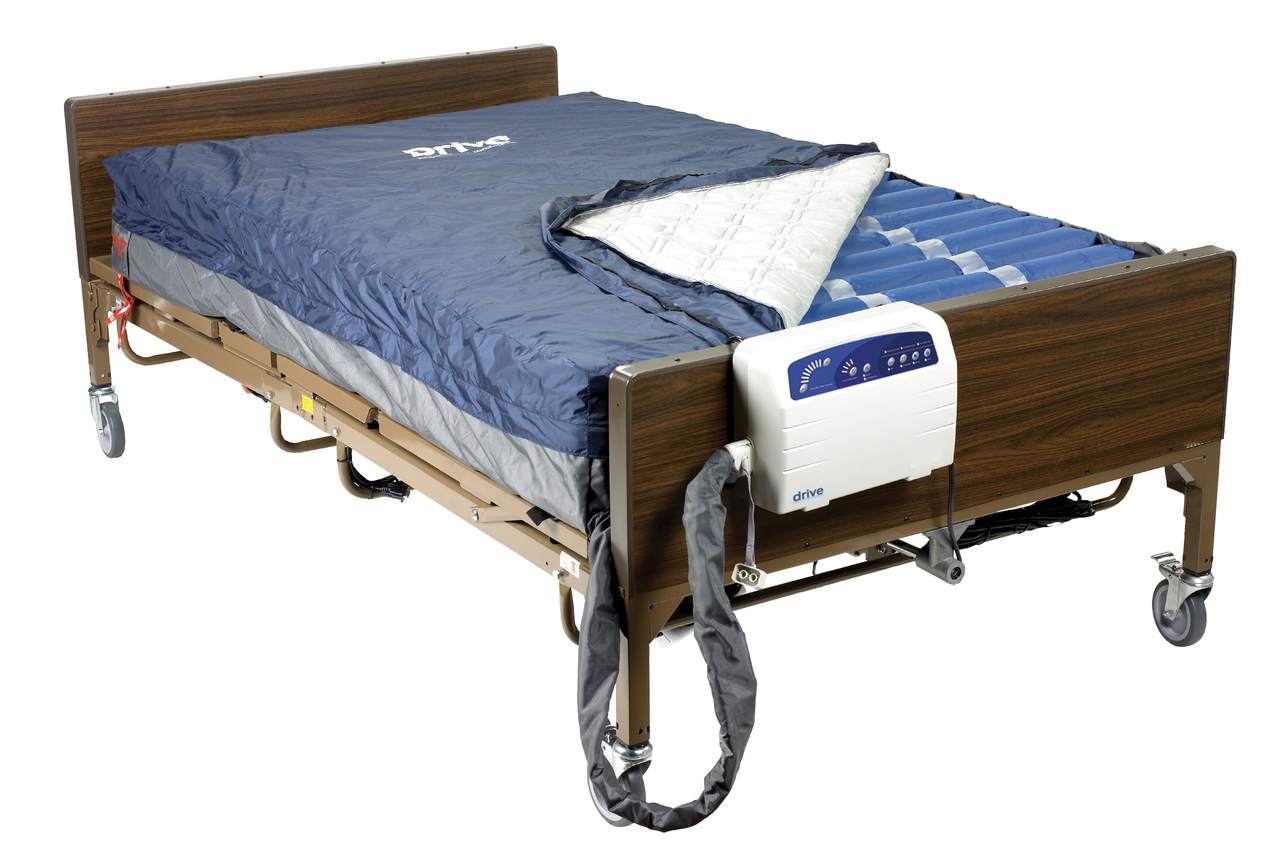
Why a Low Air Loss Mattress May Be the Best Choice for You
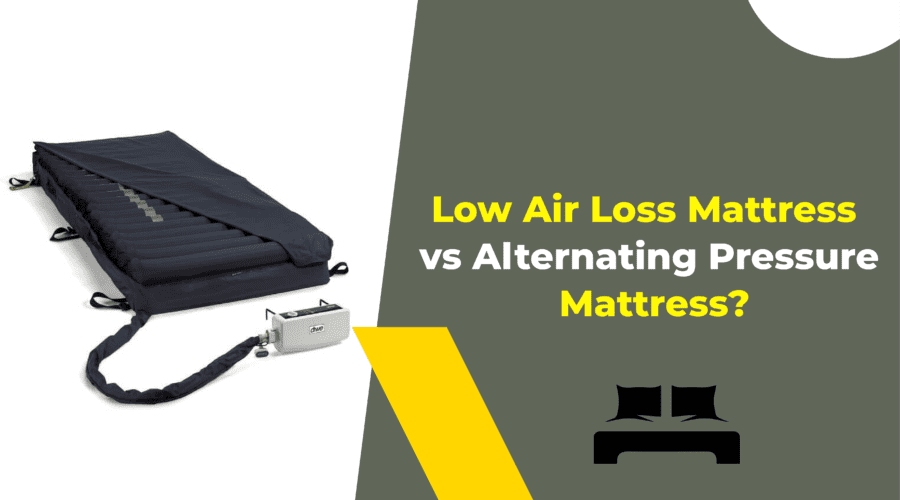 When it comes to selecting a mattress, most people often overlook the importance of choosing the right one. Not only can a mattress affect your comfort and sleep quality, but it can also have a significant impact on your overall health. This is particularly true for those who spend long periods of time in bed, such as the elderly or those with medical conditions. In recent years, two types of mattresses have gained popularity: low air loss mattresses and alternating pressure pads. While both have their benefits, a low air loss mattress may be the superior option for those seeking optimal comfort and health benefits.
Low air loss mattresses
are designed to provide a constant flow of air through the mattress, which creates a cushioning effect and reduces pressure points on the body. This is especially beneficial for those with limited mobility or who are bedridden, as it helps prevent the development of pressure sores. The consistent airflow also helps regulate body temperature, keeping the sleeper cool and comfortable throughout the night.
In comparison,
alternating pressure pads
work by alternating air pressure between different sections of the mattress. While this can help relieve pressure points, the constant changes in pressure can be disruptive to sleep and may cause discomfort for some individuals. Additionally, alternating pressure pads do not provide the same level of airflow as low air loss mattresses, which can lead to issues with moisture and heat buildup.
Moreover, low air loss mattresses are typically
more durable and long-lasting
than alternating pressure pads. This is because the constant airflow can help prevent the buildup of moisture and bacteria, which can cause the mattress to deteriorate over time. In contrast, alternating pressure pads may need to be replaced more frequently due to wear and tear.
In terms of
cost
, low air loss mattresses may initially be more expensive than alternating pressure pads. However, when considering the long-term benefits and durability, investing in a high-quality low air loss mattress may be a more cost-effective option.
In conclusion, when it comes to choosing the right mattress for your health and comfort, it is essential to consider all factors. While alternating pressure pads may have their benefits, a low air loss mattress may be the better choice for optimal comfort, health, and longevity. Be sure to consult with a healthcare professional to determine which type of mattress is most suitable for your individual needs.
When it comes to selecting a mattress, most people often overlook the importance of choosing the right one. Not only can a mattress affect your comfort and sleep quality, but it can also have a significant impact on your overall health. This is particularly true for those who spend long periods of time in bed, such as the elderly or those with medical conditions. In recent years, two types of mattresses have gained popularity: low air loss mattresses and alternating pressure pads. While both have their benefits, a low air loss mattress may be the superior option for those seeking optimal comfort and health benefits.
Low air loss mattresses
are designed to provide a constant flow of air through the mattress, which creates a cushioning effect and reduces pressure points on the body. This is especially beneficial for those with limited mobility or who are bedridden, as it helps prevent the development of pressure sores. The consistent airflow also helps regulate body temperature, keeping the sleeper cool and comfortable throughout the night.
In comparison,
alternating pressure pads
work by alternating air pressure between different sections of the mattress. While this can help relieve pressure points, the constant changes in pressure can be disruptive to sleep and may cause discomfort for some individuals. Additionally, alternating pressure pads do not provide the same level of airflow as low air loss mattresses, which can lead to issues with moisture and heat buildup.
Moreover, low air loss mattresses are typically
more durable and long-lasting
than alternating pressure pads. This is because the constant airflow can help prevent the buildup of moisture and bacteria, which can cause the mattress to deteriorate over time. In contrast, alternating pressure pads may need to be replaced more frequently due to wear and tear.
In terms of
cost
, low air loss mattresses may initially be more expensive than alternating pressure pads. However, when considering the long-term benefits and durability, investing in a high-quality low air loss mattress may be a more cost-effective option.
In conclusion, when it comes to choosing the right mattress for your health and comfort, it is essential to consider all factors. While alternating pressure pads may have their benefits, a low air loss mattress may be the better choice for optimal comfort, health, and longevity. Be sure to consult with a healthcare professional to determine which type of mattress is most suitable for your individual needs.

